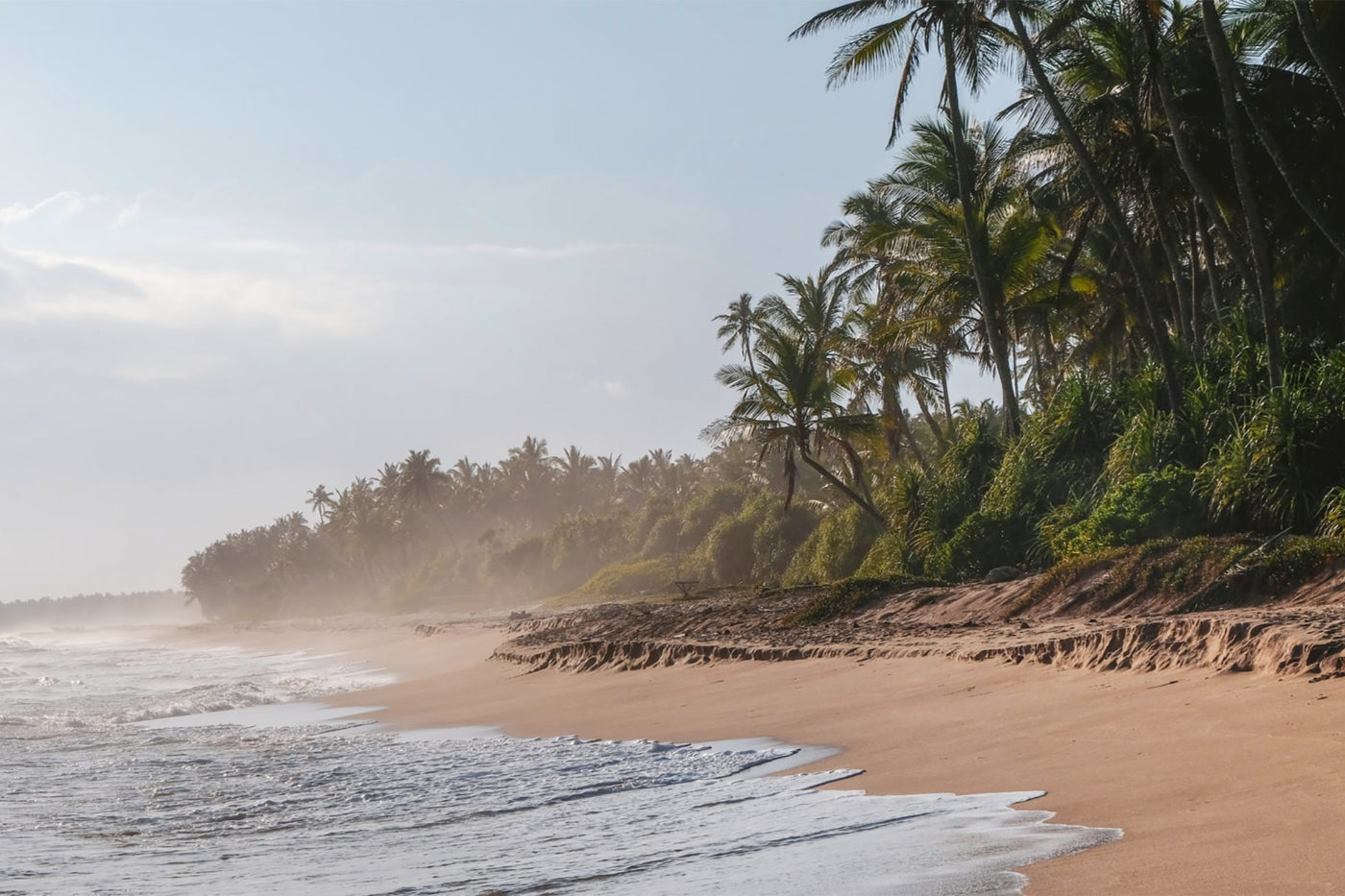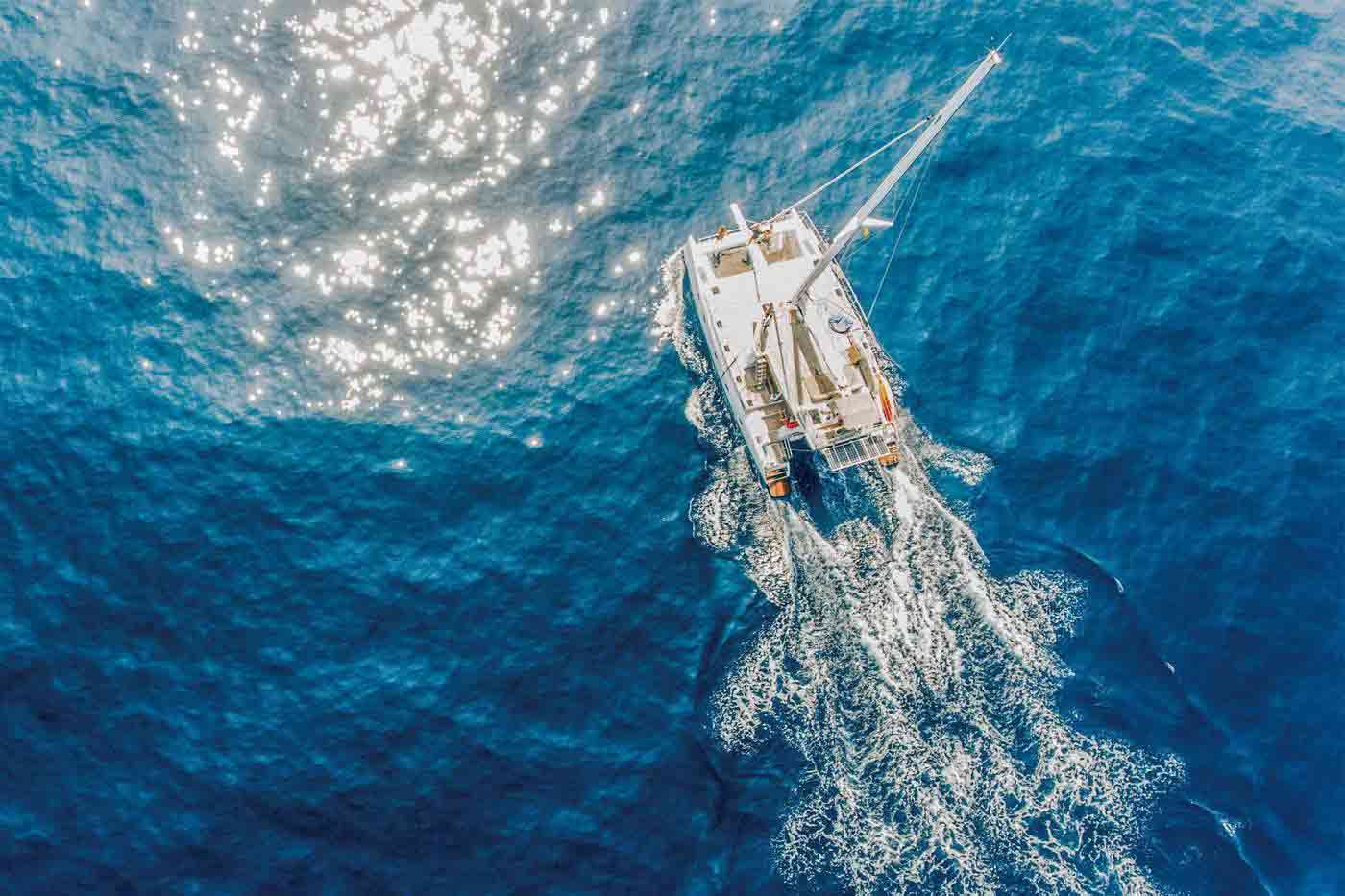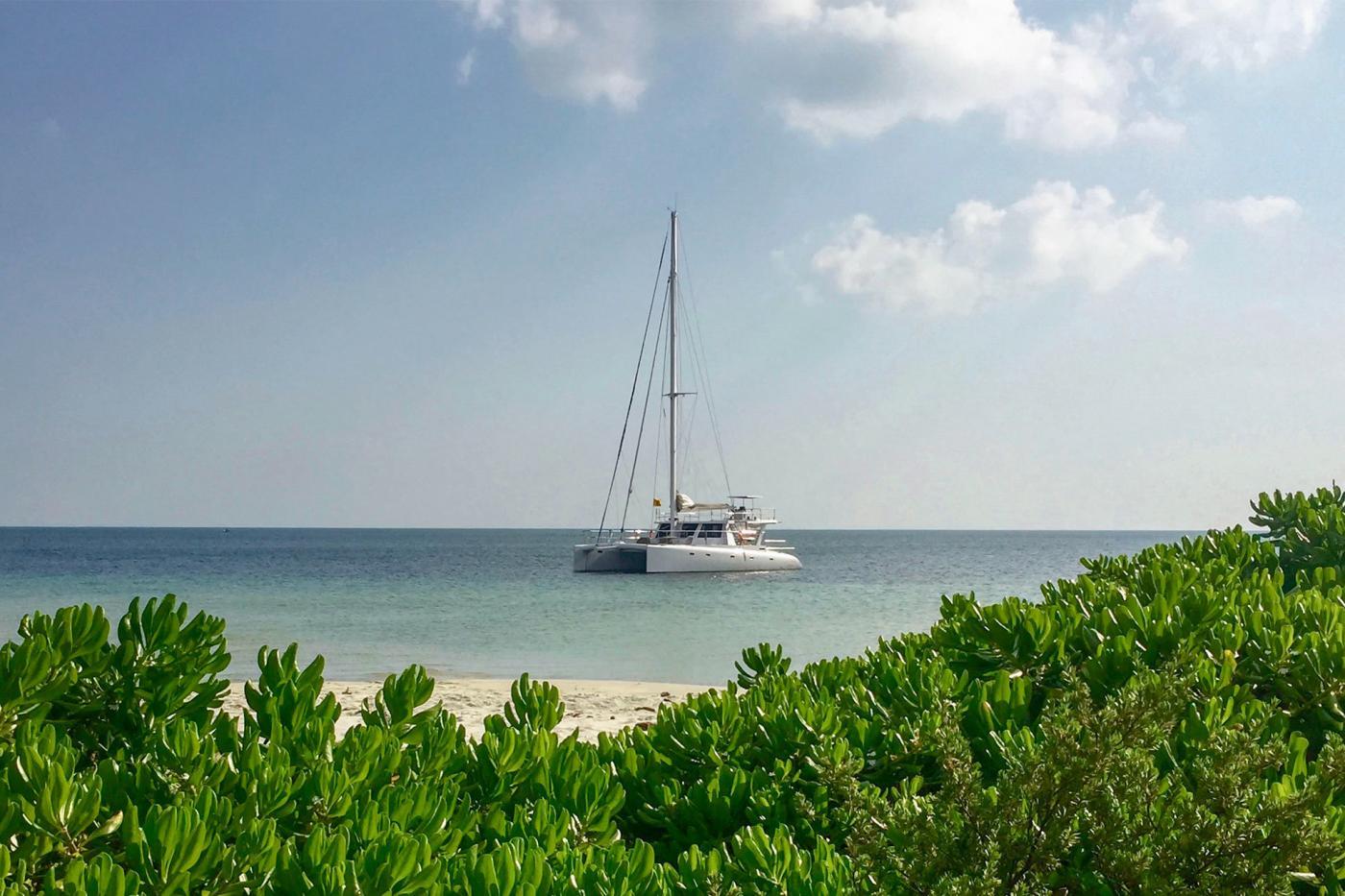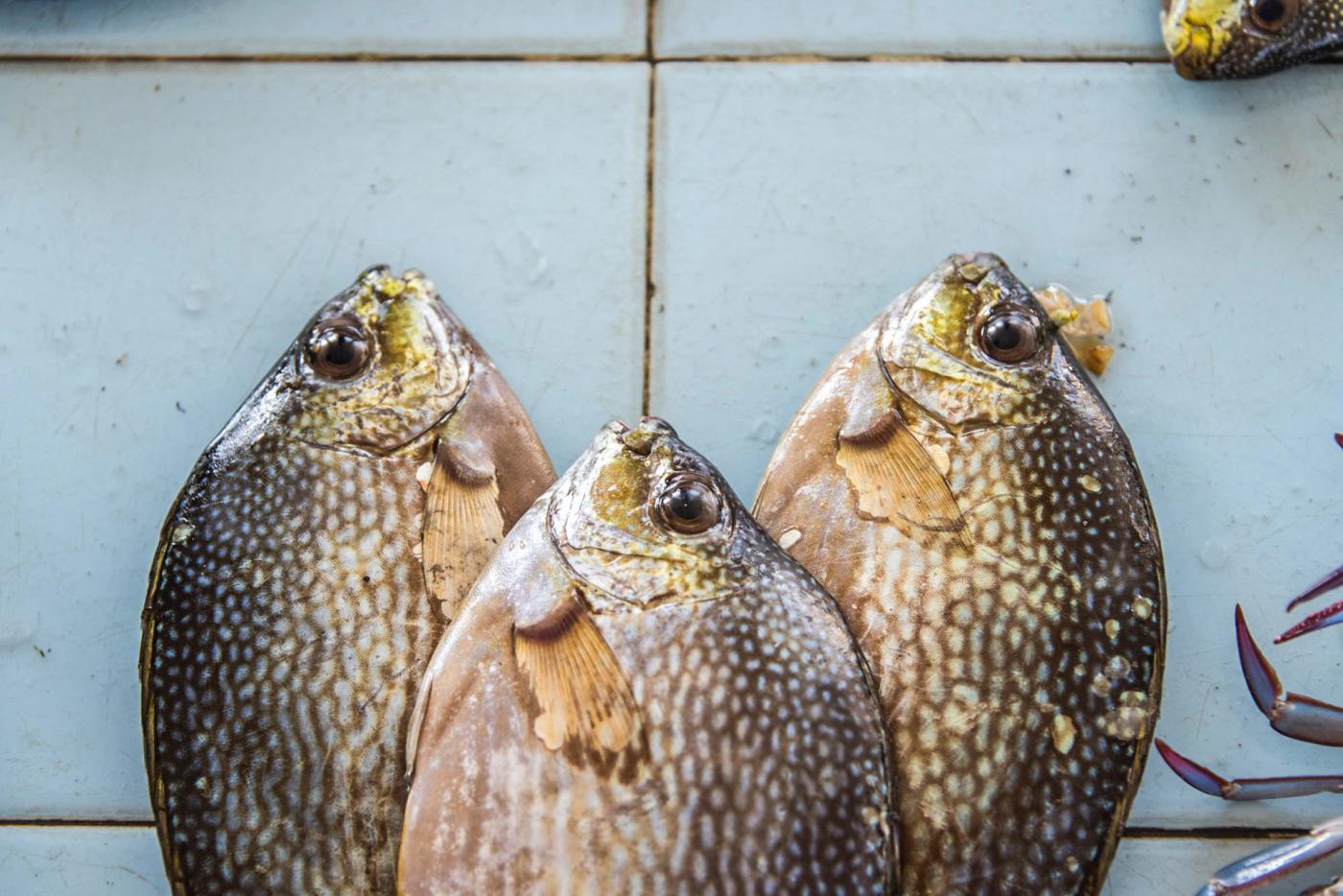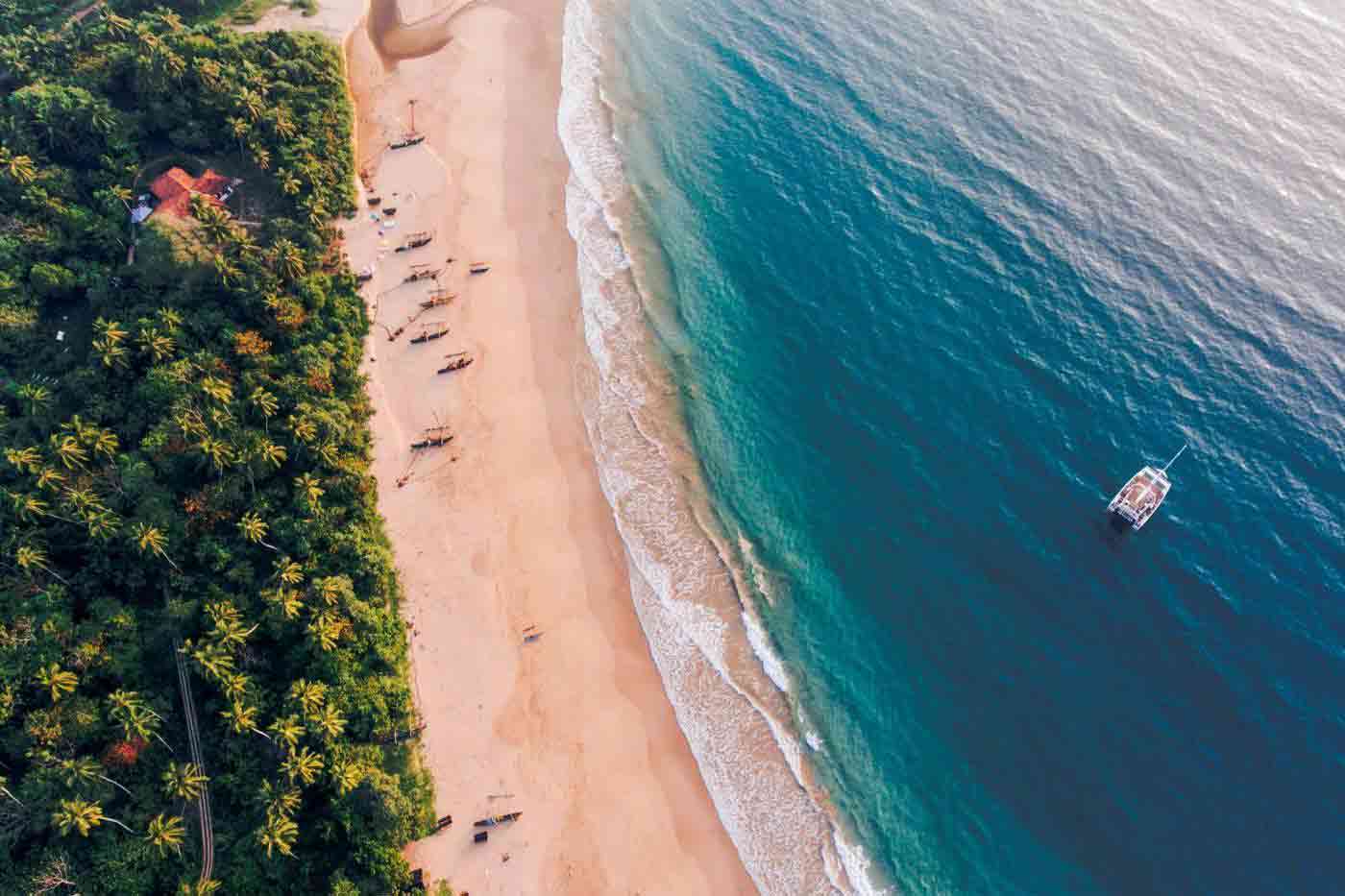We wander towards a nearby village, where our captain and guide Gauraw flags down a bread van and explains the background to these converted tuk tuks, driven by bread sellers called ‘choon pan men’. As they splutter merrily along, fragrant freshly baked wares piled high in glass cabinets mounted on the back, the majority play tinny jingles – Beethoven’s Für Elise is the most popular, apparently.
A sobering reminder of the devastation wreaked by the tsunami comes when we visit Pigeon Island National Park, where snorkellers can swim along a designated route that skirts a protected area created to give the coral the chance to regrow. The range of marine life is mind-blowing and, within seconds of donning my snorkel gear, I spot a huge swarm of angelfish, several reef sharks and two turtles. Everyone seems obsessed with seeing parrotfish, but I get the biggest thrill from spotting the more unusual creatures, such as the wonderfully ugly Napoleon fish, with their enormous, bulging foreheads. Haphazardly placed peg-like teeth, used to grind up lumps of coral, complete the look.
In the quiet evenings, we hang off the back of the boat, watching enormous rays streak through the water, their milky silhouettes illuminated by the catamaran’s rear lights. Sometimes the night is so balmy and star-spangled, I simply can’t bear to leave and I drag my bedding up on to the upper deck and sleep under the big, bright moon.
On the fourth day, we anchor near Pasikudah, home to some of the eastern coast’s busiest beaches. I head ashore to find dozens of sunburnt tourists lounging on tightly packed deckchairs. Except for my fellow passengers, I haven’t seen anyone for several days and have been spoilt with endless stop-offs at deserted beaches, where we’ve driven the RIB straight on to the sand, then swum back to the boat through the glass-clear water. I remind myself that these new hotels, with their beachfront cocktail bars and infinity pools, are part of the area’s recovery. When your base isn’t a hotel but a boat, it’s easy to forget that this beautiful part of Sri Lanka is proving increasingly popular. Then I scuttle back to the RIB and the sanctuary of the catamaran.
The next day, I’m sprawling on the upper deck reading a book. I hear Gauraw shout that he’s spotted a dolphin and I’m marginally excited, but not over the moon. I drain my bottle of Lion beer before I amble to the front of the boat and realise this sighting is slightly different. I find Gauraw staring slack-jawed at a vast expanse of ocean heaving with the rise and fall of hundreds of dolphins. There are so many that it doesn’t matter that I don’t have my proper camera to hand. I take the approach that if I simply click away continuously with my iPhone for a few seconds, I’ll almost certainly snap something special. And I do – a silvery dolphin mid-air and mid-spin, seconds after it bursts out of the water. Then they are gone and the silence descends once more. I doubt my friends and family back home would ever believe that I’ve just seen close to a thousand dolphins bounce through Sri Lanka’s turquoise waves but, for once, it’s a secret I’m more than happy to keep entirely to myself.
As I disembark from my home-from-home, the RIB awaits to bounce me back across the water to Dutch Bay. From there I hike to the temple of Koneswaram in Trincomalee. Wandering in awe around this fragrant, incense-fogged tribute to the Hindu god Shiva, one final reminder of the beauty of getting about by boat comes my way when a gaggle of selfie-stick-waving tourists stumbles inside.
In an increasingly crowded and chaotic world, seeking out undiscovered gems can be tricky. Trickier still is the balancing act required between showing support for a destination as a visitor and appearing unmindful of the devastating impact of war, terrorism and natural disasters.
Aboard the catamaran, I’ve had the opportunity to connect with Sri Lanka and its people on a much deeper level than if I’d been lying on the beach at Pasikudah. I recall the chat I had with one of the crew members, who told me about his memories of the civil war, about school being cancelled and of bombs streaking across the sky. Over a decade later, he’s become part of Sri Lanka’s recovery process, a passionate ambassador determined to showcase the country’s best bits without glossing over its darkest days. It’s a mix of enthusiasm, optimism and respect shared by many of the guides I’ve met in Sri Lanka and witnessing it first hand is what experiential travel for me is all about.
Photography courtesy of G Adventures, who also arranged Tamara’s tour
At OutThere, we believe in boundless travel. But we understand that some destinations can pose challenges to travellers that complicate visiting them. We advise all visitors to inform themselves about local legislation and customs, and to work with a trusted travel provider in order to ensure a safe and pleasant holiday.


